Toyota develops its vehicles and technology under the umbrella of an ‘Integrated Safety Management Concept’, one part of a three-pronged approach which involves continual improvement in vehicle safety as well as initiatives to improve driver and pedestrian awareness and to create a safe traffic environment.
Toyota’s eventual aim is to realise a society where traffic accidents are a thing of the past, which is why decades of research into safety technologies have resulted in Toyota cars receiving consistently high results in Euro NCAP crash safety tests, with the Prius, Yaris, Auris, Verso, Avensis and RAV4 achieving the maximum five-star award.
Toyota’s THUMS computer-modelling system has greatly helped the progress made in occupant and pedestrian safety. In this post, we take a look at some of the passive safety technologies that protect occupants in the event of a collision:
Impact-Absorbing Body and High-Strength Cabin
Seatbelts with Pretensioners and Force Limiters
Whiplash Injury Lessening (WIL) concept seats
Active Headrests
SRS Airbags
ISOFIX child seat mounting points
Impact-Absorbing Body and High-Strength Cabin
The safety of occupants in a collision begins with the construction of the vehicle itself. Since 1968, Toyota has designed and built its vehicles to have impact-absorbing body structures that will crush in the event of an accident, soaking up as much energy from the collision as possible.
In 1987, Toyota further improved occupant safety with the introduction of a high-strength safety cabin that dissipates energy throughout the entire body and minimises damage to the passenger compartment.
Seatbelts with Pretensioners and Force Limiters
Toyota introduced the three-point seatbelt in 1967, and the humble but vital restraint device has been saving lives ever since with little significant change to its design.
Seatbelts are immensely strong – capable of withstanding a weight of two tons – and are designed to control the movement of occupants within the cabin, particularly by limiting any impact to the chest during an accident. Yet they are also comfortable to wear in everyday driving, essential in encouraging occupants to use them on every trip.
In 1991, Toyota added pretensioners to seatbelts, a mechanism that instantaneously retracts the seatbelts when a strong frontal impact is sensed. This, in effect, quickly clinches the seatbelt to remove any slack in the belt and tightly grip the occupant before the full force of the impact is felt by the body.
Force limiters were introduced in 1997 and work in harmony with the pretensioners to protect the occupant while minimising the impact of the seatbelt itself to the occupant’s chest. Force limiters maintain an adequate amount of tension on the seatbelt to restrain the occupant without the force of the restraint causing injury.
Seatbelts with pretensioners and force limiters are fitted to all Toyota passenger vehicles in the current range.
Whiplash Injury Lessening (WIL) concept seats
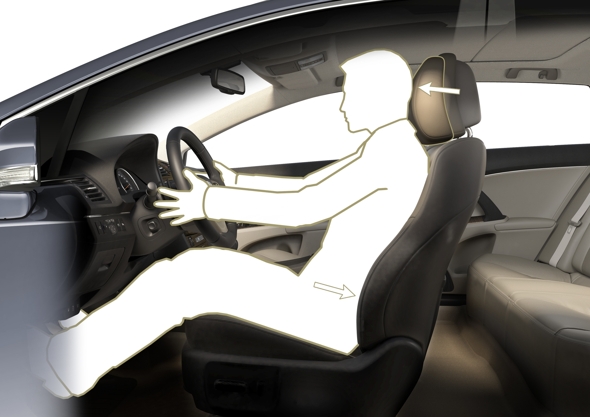
Just over half of injuries sustained in accidents in Japan were as the result of rear-end collisions, but approximately 90% of those injuries were neck injuries. That’s why Toyota developed the Whiplash Injury Lessening (WIL) concept seat, which first debuted in 1997 and was updated further in 2005.
The WIL concept seats are designed to cushion and support the occupant’s head and chest simultaneously, minimising the injury occurring from the head and torso moving in different directions. Toyota used its THUMS virtual-human computer modelling to confirm the effectiveness of the WIL concept seats in reducing whiplash injuries in lower speed rear impacts.
WIL seats are fitted as standard to most Toyota models, including Yaris, Auris, Prius, RAV4 and Land Cruiser.
Active Headrests
Active Headrests, introduced in 2007, are an extension to the WIL concept seats that further minimise neck injuries in rear-end impacts. A sensor in the seat is triggered by the lower back pressing into the seatback and activates the active headrest, which moves diagonally upwards and forward to catch the back of the head.
This technology decreases the severity of whiplash injury by a further 10-20% compared with the WIL concept seat on its own.
Active Headrests are featured on selected models in the Prius family, as well as Verso, GT86 and Land Cruiser.
SRS Airbags
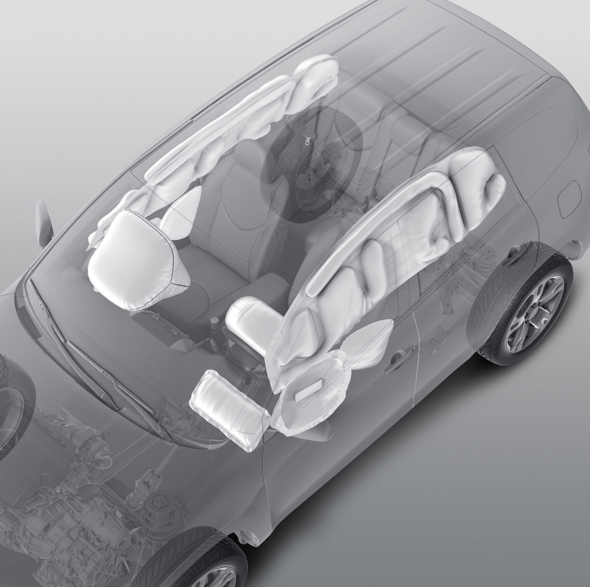
The first SRS (Supplemental Restraint System) airbag was fitted to a Toyota in 1989, providing protection solely for the driver. Since then, Toyota’s SRS airbag systems have been expanded throughout the passenger cabin to the extent that some Toyota models have nine or more airbags that create a protective cocoon around their occupants.
SRS airbags are triggered in the event of serious collisions, inflating rapidly to produce cushion the occupant and reduce the risk of severe or fatal injury. Dependent on the model, SRS airbags include front airbags for head and chest protection, knee airbags, side airbags, curtain shield airbags, seat cushion airbags and even the revolutionary rear window curtain shield airbag specially developed for the tiny Toyota iQ.
ISOFIX child seat mounting points
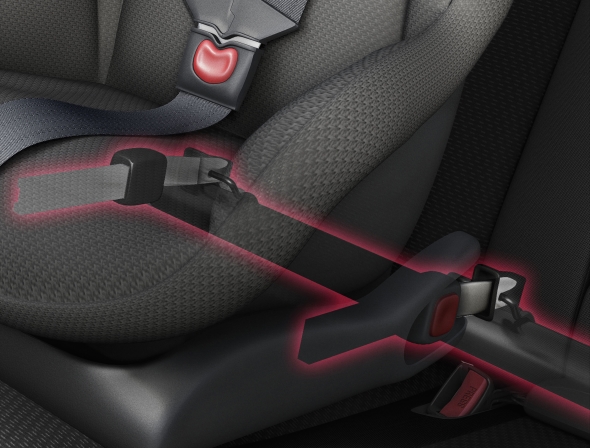
ISOFIX is an internationally recognised standard that sets out the specification for secure anchoring of child safety seats in cars, consisting of two anchor points at the base of the rear seats and a top tether point. ISOFIX greatly reduces the risk of improperly fitted child seats, thereby increasing the safety and effectiveness of the child seat.
Occupant safety is a priority for Toyota, so all Toyota passenger vehicles are equipped with ISOFIX child seat mounting points.
To learn more about other Toyota safety technologies, see these related posts:
Braking technologies
Stability and control technologies
Monitoring systems
Safety through convenience
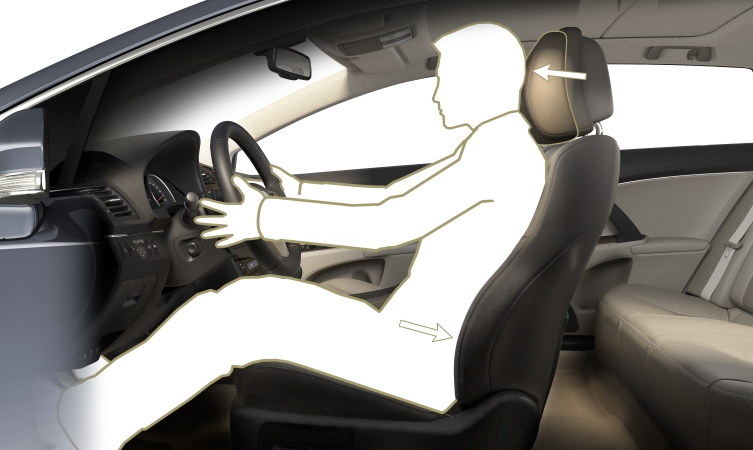
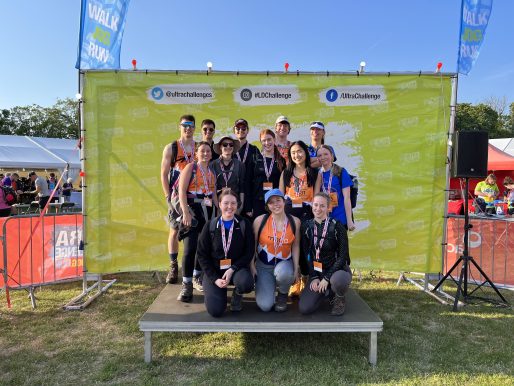
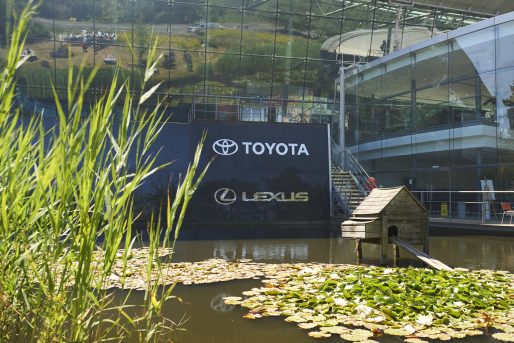
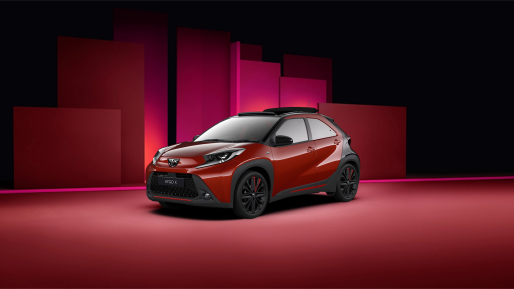
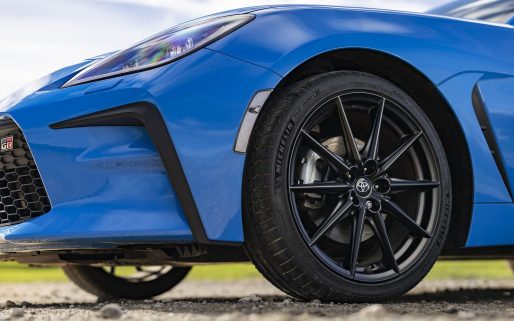
Hi, does YB54 YWE have isofix? Thank you.
Hi Helen,
Thanks for getting in touch. We have checked this for you and it appears your vehicle does not have ISOFIX.
Thanks.
Hello,
Could you tell me if my 3DR 2004 Toyota Yaris has isofix points? Registration is V13 KTS
Thank you
Hi Katie,
Thanks for getting in touch. We have checked this with our team and your car doesn’t have Isofix points.
Thanks.
Hello,
Does my 2006 toyota corolla 5 door have isofix features?
Thank you,
Siobhán.
Hi Siobhan,
Thanks for getting in touch. We would recommend getting in touch with Toyota Ireland for further help with this: https://www.toyota.ie/
Thanks.
Hi, does my Toyota Avensis T25 estate have Isofix Reg NG06 PVX
Hi Jenny,
Thanks for getting in touch. We have checked this for you and from the information we have available, your Avensis is not fitted with ISOFX.
Thanks.
Hi does my toyota chaser jzx100 have isofix? It’s 1996z also, the front passenger seat says it has srs airbag on the side. Is this ok to put a child seat on??
Hi Dom,
Thanks for getting in touch. Could you please provide us with the reg? We can then look into this further for you.
Thanks.
How to put the car seat in isofix Toyota auris 2012? It looks really strange.
Hi there,
Thanks for getting in touch. You will be able to find more information on the ISOFIX anchors in your Auris in your owner’s manual that you can access here: https://www.toyota.co.uk/tme#/my-toyota/eManual
For installation instructions, you will need to follow the instructions provided with the child seat.
Thanks.
Hi I have a Toyota yaris YT60 does it have anchor points and isofix?
Thanks
Hi Nicola,
Thanks for your message. Could you please provide us with the reg?
Thanks.
Does my Hilux registration P062 ZRF have Isofix?
Hi Marie,
Thanks for getting in touch. We can’t seem to find any information in our system using your reg. Could you please provide us with the VIN? If you aren’t sure where to find it, this blog will be able to help: https://mag.toyota.co.uk/toyota-vin-vehicle-identification-number
Thanks.
Hi there, its Atfr29g207084480
Hi Marie,
Thanks for sharing this with. We’re really sorry for any inconvenience, however unfortunately your VIN is 1 digit short and we haven’t been able to find anything in our system. If you would like to double-check it and re-send it to us we can check again.
That being said, we performed a generic search and looked at Hilux built around the time of the ’62 plate registration and ISOFIX is not listed against the vehicle of that age.
Thanks.
Hi does my Yaris reg EK02NLP have isofix? Thanks
Hi Sean,
Thanks for getting in touch. We can’t find any mention of your Yaris having ISOFIX fittings in any of the documentation we have.
Thanks.